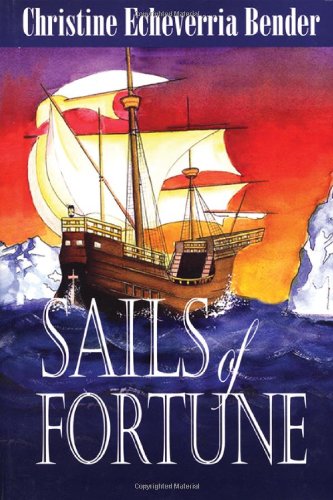Sails of Fortune
Sails of Fortune opens on a September night in 1519, when Juan de Elcano fears that a Portuguese spy is about to attack him, and almost accidentally skewers his dear friend Elorriaga. Little do the two shipmasters know, as they wait to join Magellan’s quest for a westward passage from Spain to the Spice Islands, that they may find themselves far more dangerously divided before the voyage is over. Their journey will be plagued with storms, plots, mutinies, desertions, starvation, friendly and unfriendly natives, scurvy, and pursuit by the Portuguese. Magellan’s command is tenuous, because many of the Spanish crew are uneasy to have a Portuguese captain-general, even if his own countrymen damn him as a traitor. Once they find westward passage and reach the islands, one would think that the worst times were over, but in fact, they had only begun…
Bender crafts the novel around Elcano. Certainly this is historically convenient, since he was one of the few men to complete the voyage, and Bender gives him a likeable and all-too-human personality. The novel will delight old salty dogs and readers without sea legs; Bender has clearly done her research, but it is not necessary to have strong historical or technical knowledge to enjoy the tale.
Bender’s third-person narrative is extremely adept; her dialogue skills are a little lighter but still enjoyable. The first half of the book occasionally conveys “reader education information” awkwardly: a knowledgeable seaman will “remind” an equally experienced friend of facts that both would know stone cold, merely for the reader’s benefit. It would have been nice to get this information in a less contrived way, but these instances taper off as the book progresses, and the explorers ask ingenuous questions about new wonders seen on the voyage.










